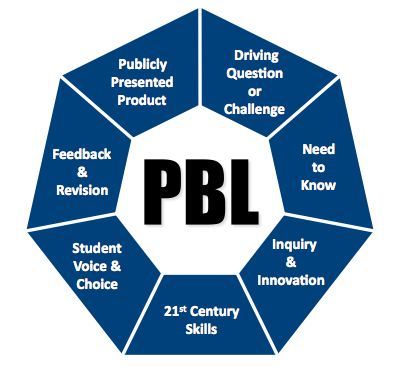The PBL Process

As part of our timetable at my school, we have timetabled professional learning teams. This is always a great opportunity to learn from other KLA’s about how they do things, and I find that the opportunities come from the least expected places.
This term our focus is the PBL Process. A series of activities are designed by our head of PL, and we reflect and discuss these in teams. The final product: a series of blog posts, or a blog post about project based learning.
My thought processes in these cases always goes back to ranking what’s important. I like lists. They help me understand the world. So, if we discuss the elements of a PBL Project, what are the MOST important? Which ones are essential to Project Based Learning, and which can you do without?
If you’d asked me this five years ago, I probably would have said group work. But then, I teach Industrial Technology…all our learning centres around projects, and students collaborate with each other, but they develop individual projects. Some very good ones. All of the learning for the content appears through the process of their development of their product. This learning is documented, and the research and evaluation of each benchmark drives the development of their project. If it’s done properly. Designers have been doing this for years. We call it the design process.


It’s interesting then, when deciding which is the most important element of the the process, to reflect on how my teaching of Industrial Tech, a traditionally project based syllabus (yes, this is embedded in the outcomes) has changed over the years.
5 years ago, I would have said that the answer to what was the most important element in a PBL project was definitely the needs to know. Know and Need to know elicit student pre-learning, allow you to differentiate and allow students to guide the learning. If you are just presenting your project without the needs to know, are you just guiding students through a pre-designed sequence of learning events that allow them to progress from one benchmark to the other? One of the things that I still use extensively within my year 12 classes, even though they are no longer under the PBL model is the need to know. Pre-PBL Years I would give my students a list of the things that they needed to research and document in order to get the content that they needed in order to understand their project. My first lesson of research is now to re-order the class into similar types of projects and ask a simple question…what do you need to know in order to complete your project? This is essentially the purpose of the research section, and the students come up with many more elements to research than I could have thought of to get them to research. And, it’s relevant to their project, and it then helps them with the knowledge that they need in order to complete their project.
Why is it necessary for students to follow a set of benchmarks? Yes, they are stepping stones for the product, and it helps to scaffold and guide them, but can students get to the benchmarks without the pre-defined pathway that the teachers give them? Can students not pick their own pathway with the teacher facilitating and sometimes redirecting with a subtle nudge (or a massive push). Most of my students in Ind Tech do their own projects. They are facilitated through the use of benchmarks, which are set and checked pieces of work that must be delivered. They plot their own path and choose their own projects, but can this be done within the PBL model. Why does everyone have to create a movie (for example) to demonstrate how World War II effected society….can we not leave it open and have students select the product and the pathway of where they go to to learn? Could we have a project where the task is to raise awareness, and you could use any method you want to do this. All it needs is a slight change of the context of the task, and you are opening up opportunity to students to do something different, original, creative and reflective of where they want to go.
 I think now, though, that what I’ve really come to believe is that there is one thing that we can’t really do without in project based learning, and that is a teacher that is interested in intervening on groups. Whether it is to support and scaffold their learning, to give them the look…that shows that you are really not believing what they are saying (see left), or to drop a bomb into a group that are working well, to say….”well, that’s good, but have you considered…” We need to remember that these are students, who are of an age where they need to be reminded to wear underwear (maybe that’s just my son)…..they will need help in order to manage themselves, to work with others, and to be creative. These are all things that an interested teacher can bring them. Or, you can give them the task, tell them to go for it and sit back and watch them fail. But then, why are you there?
I think now, though, that what I’ve really come to believe is that there is one thing that we can’t really do without in project based learning, and that is a teacher that is interested in intervening on groups. Whether it is to support and scaffold their learning, to give them the look…that shows that you are really not believing what they are saying (see left), or to drop a bomb into a group that are working well, to say….”well, that’s good, but have you considered…” We need to remember that these are students, who are of an age where they need to be reminded to wear underwear (maybe that’s just my son)…..they will need help in order to manage themselves, to work with others, and to be creative. These are all things that an interested teacher can bring them. Or, you can give them the task, tell them to go for it and sit back and watch them fail. But then, why are you there?